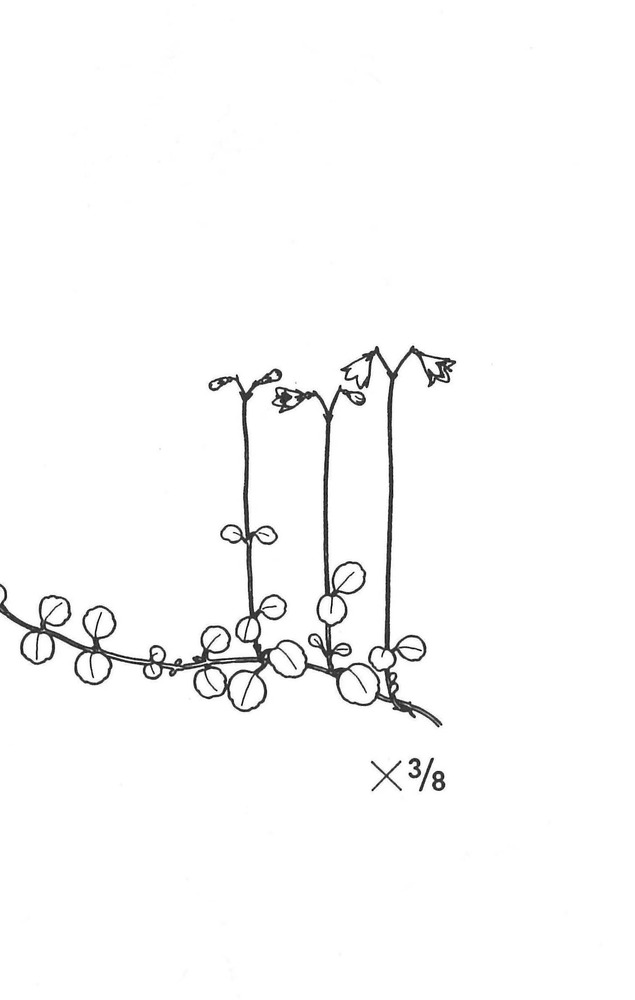| Linnaea borealis L. | |||
| |||
| Family | Caprifoliaceae — APG family: Caprifoliaceae | ||
| Synonyms | Linnaea serpyllifolia Rydb. | ||
| Description | Stem about 1 mm thick, up to 1 meter long, creeping, branched, somewhat woody; young twigs pubescent and often glandular; leaves leathery, broadly ovate to roundish, often somewhat acute, mostly with 1-3 acute teeth on each side, sparsely ciliated; flowering shoots with 2 (—4) pairs of leaves; peduncle glandular, with pair of small bracts at summit, forking into pair of glandular pedicels, each bearing a fragrant, whitish to rose, nodding, campanulate flower, lacking tube or with tube shorter than calyx. | ||
| Ecology | Woods, heaths, and dry ridges in the mountains to at least 1,200 meters in McKinley Park. Described from Sweden, Switzerland, Siberia, and Canada. |
This is a digital representation of Eric Hultén’s ‘Flora of Alaska and Neighboring Territories: A Manual of the Vascular Plants’, which was published by Stanford University Press in 1968. The book was digitized by C. Webb (at UAMN) as part of the Flora of Alaska project, with funding by the US NSF (Grant 1759964 to Ickert-Bond & Webb), and with permission of Stanford University Press. Data and images © 1968 Board of Trustees of the Leland Stanford Jr. Univ. Usage licence: Creative Commons BY-NC-SA 4.0. NB: You may find OCR errors; please refer to the hard-copy if in doubt.
